My Wildlife Neighbors

My Local Discovery
When was the last time you stepped out your door for a walk and ended up discovering an active beaver colony only ten minutes from your home?
I was fortunate enough to be at the right place at the right time to experience an extraordinary surprise like this at a small creek and pond not far from my loft in the rural town of Tieton, Washington. When I returned home, I excitedly recorded the following thoughts in my “observations” notebook:
On June 8, 2022, around 7 pm, I saw two, large, whiskered snouts pushing their way through the surface of the calm evening pond water, close to shore. The snouts appeared a bit too large to be rats! But if they were rats, I hoped they would not be exiting the water anytime soon, as I stood quietly nearby. Just then, one of the creatures turned away from me, dived under the water, lifted his long flat tail straight up, and began swatting the surface of the water with a series of loud “whap—whap—whaps.”
Since rats do not have flat, wide tails, I suddenly realized that the animals gliding through the water must be beavers—and I was elated! I found out later that beavers slap the water surface with their tails to alert family members of the presence of humans or other threats. But I was not among the dangers they had in their minds.
— Sandra Dean, Art Nun
I had visited that pond many times since discovering Tieton, but this was my first encounter with members of our local beaver population. A Tieton friend who has been documenting the activities of the beaver colony for five years sent me the real-life photos below, with this explanation:
I think there is most likely one colony with two functioning lodges. The parents have the older one on the south and their offspring most likely constructed the newest one last year. The black and white photos are from my wildlife cameras.
— Tieton property owner
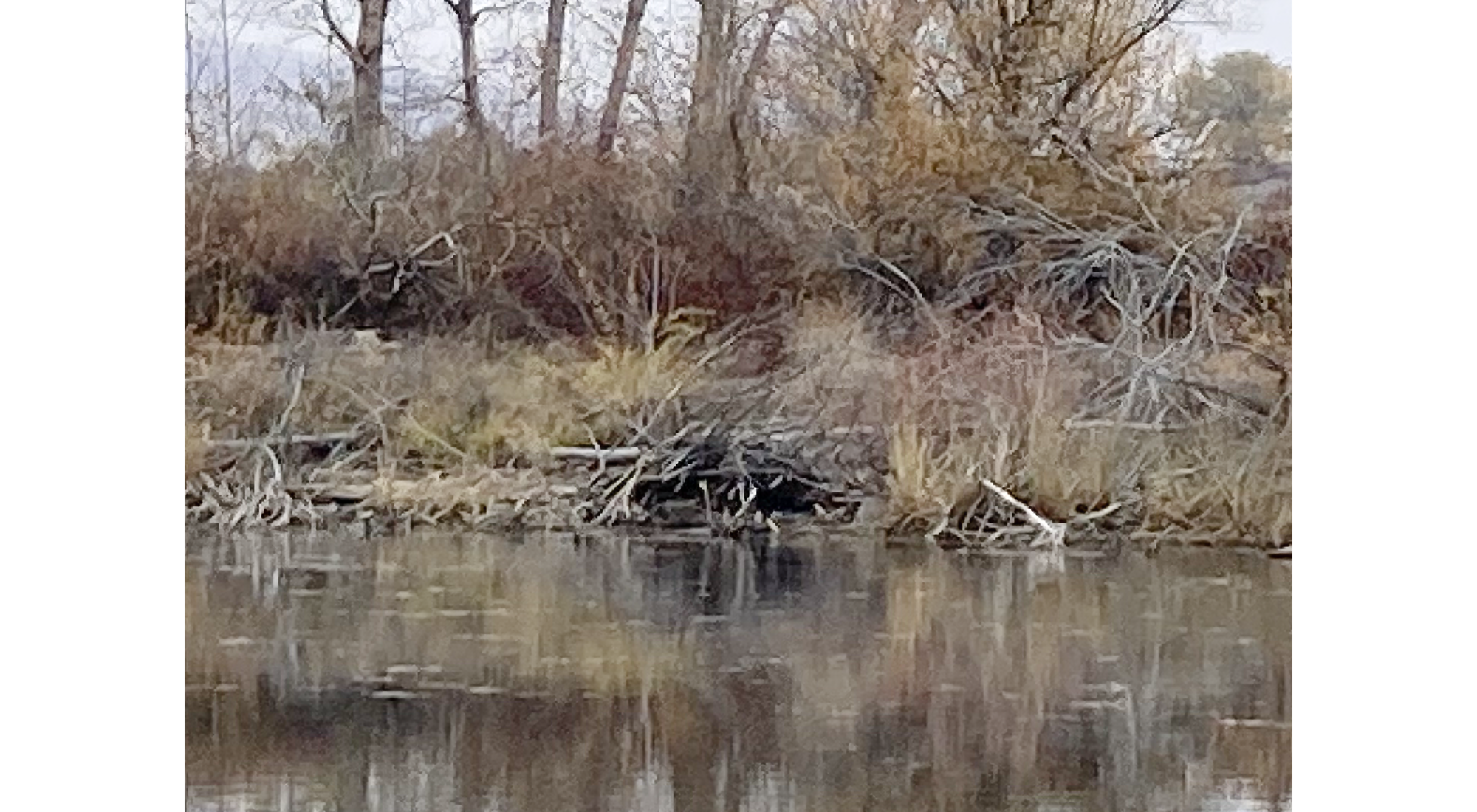

For added educational excitement, the color illustration below offers a great cut-away view of the interior architecture of a typical beaver lodge. The pond water level, created by the beavers’ handiwork, provides safe underwater access to their lodge, but prevents predators from entering.
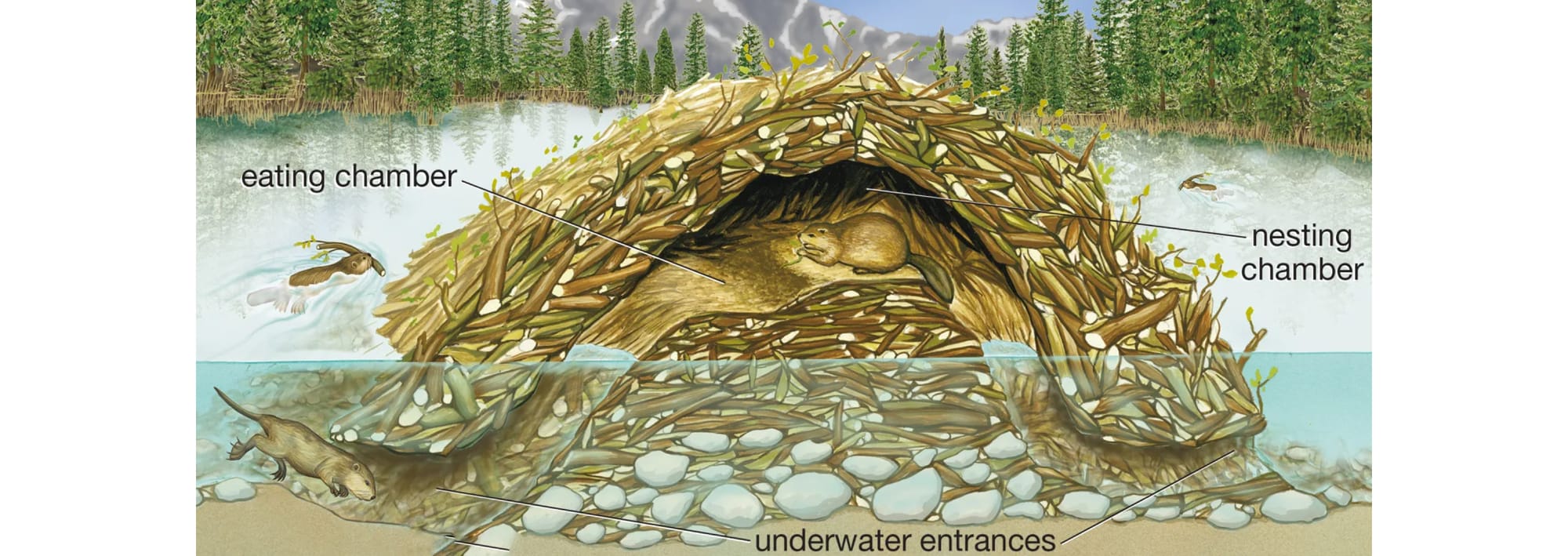
Since a beaver lodge may not be among most familiar highlights you may encounter in your everyday world, I’ve included a short video below, which provides more information about the remarkable and beneficial creatures that live inside. Filmed in the mountain regions of Wyoming, it follows the activities of one juvenile North American beaver—the same species as the ones that live near Tieton.
Alert! If you’ve never had the opportunity to observe baby beavers in their lodge, this is the film for you!
My Favorite Children’s Book
The accidental discovery of our local beaver colony reactivated long dormant memories of my favorite picture book from early childhood (around 4 years old) titled Bobby Beaver, by Susan Wheeler (illustrations by “Sari”). The cover is shown as the feature image of this post. With the subject of the beaver pond suddenly active in my mind night and day, I wondered if any copies of my beloved book might still be available for sale. After a quick online search, I found two used copies and purchased the “collector’s edition,” with the cover intact and no interior damage. It was first published in 1945 and is now a comforting addition to my eclectic library of beautiful (Art Nun-approved) children’s books. What a treasure!
I never forgot the book’s illustrations of dear, impractical Bobby enjoying what he did best: swimming, diving, floating on his back in the clear pond jus’ feelin’ good—and singing the little songs he created that made his day feel even better!
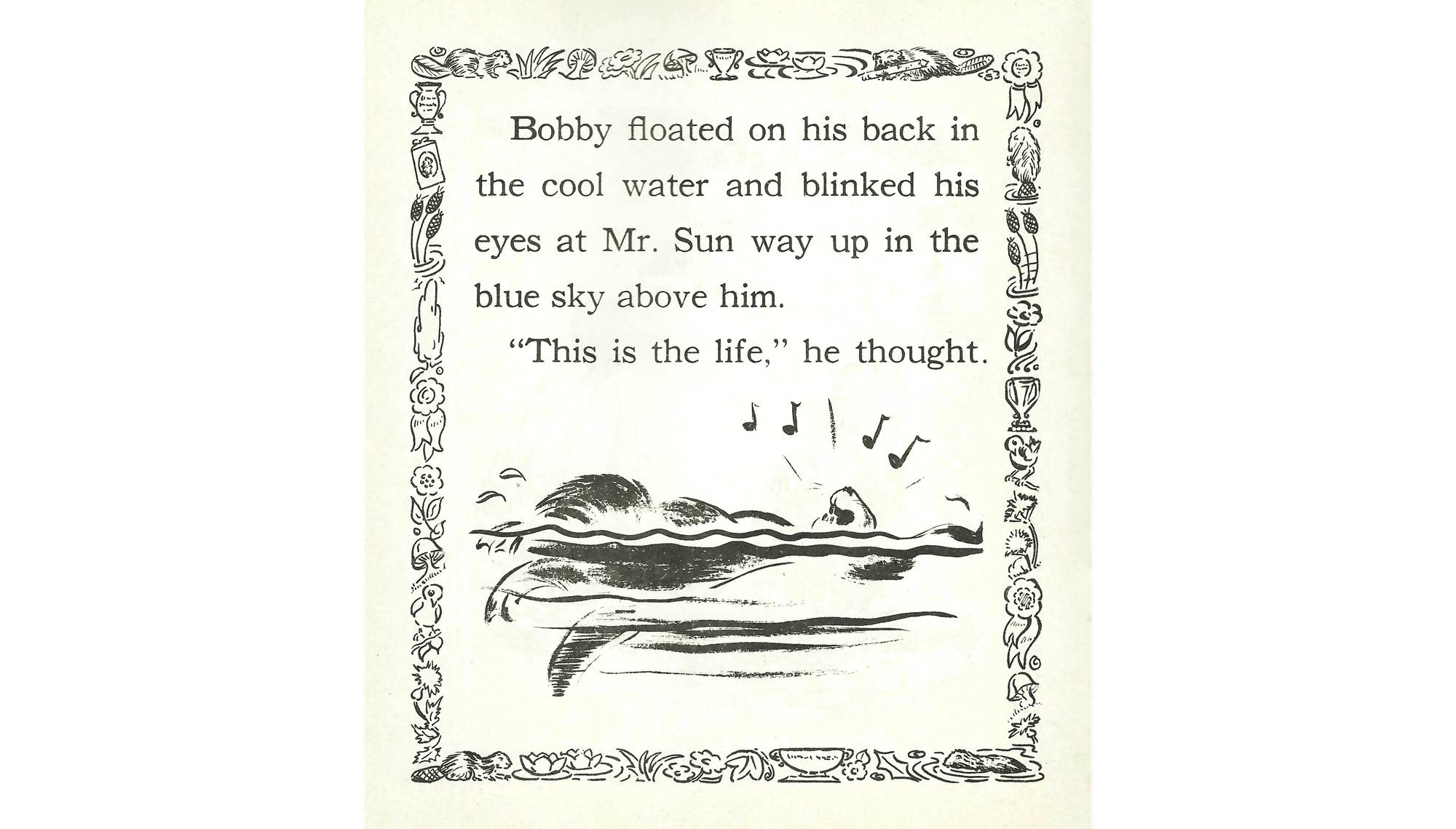
Beavers are so very busy, that they make me awfully dizzy! They may work but I will play, and I will have a happier day!
— Bobby Beaver
Every 4th of July, Beaver Hollow held pond races, and Bobby was an avid participant.
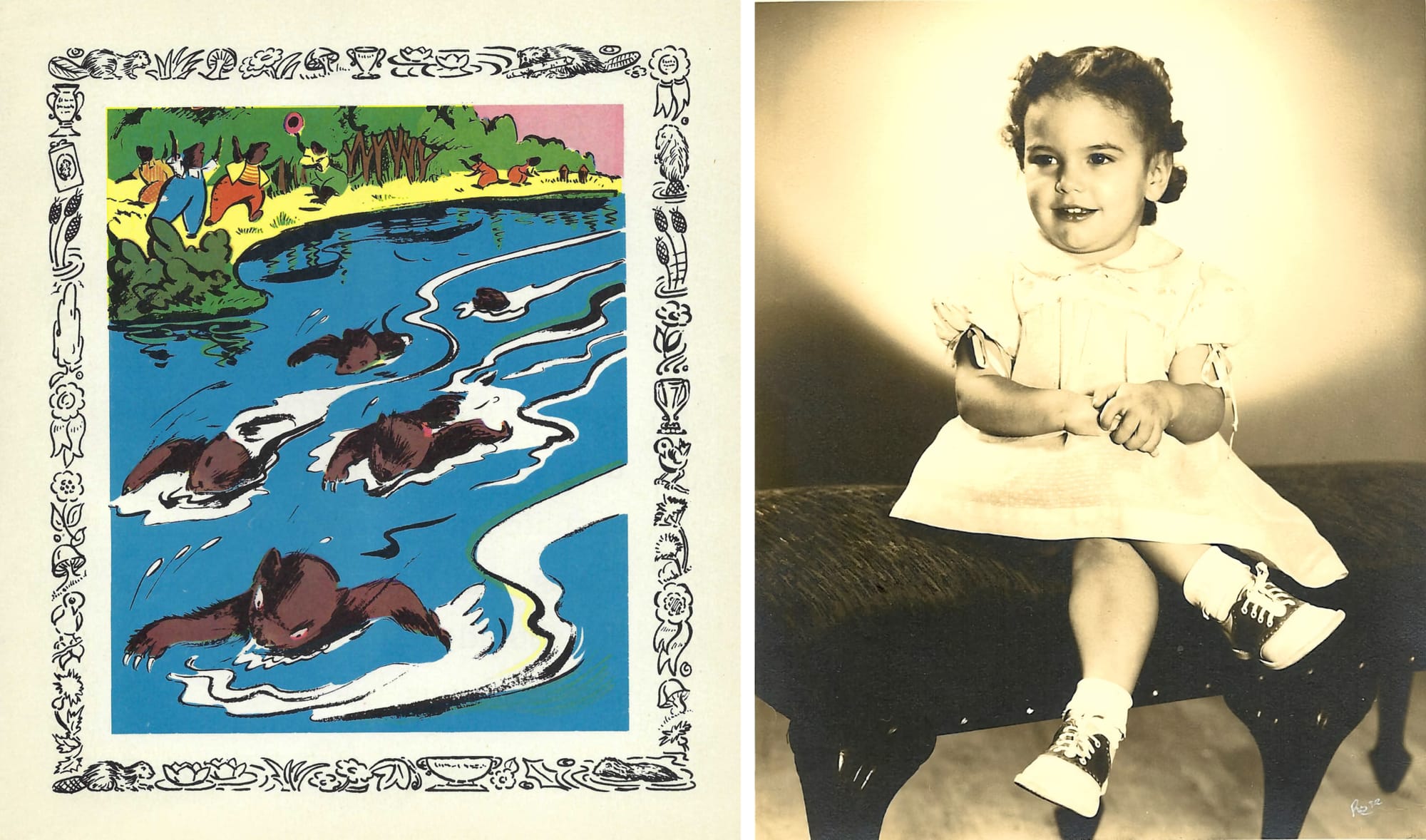
Bobby always won first place in the pond races and had medals and trophies to prove it!
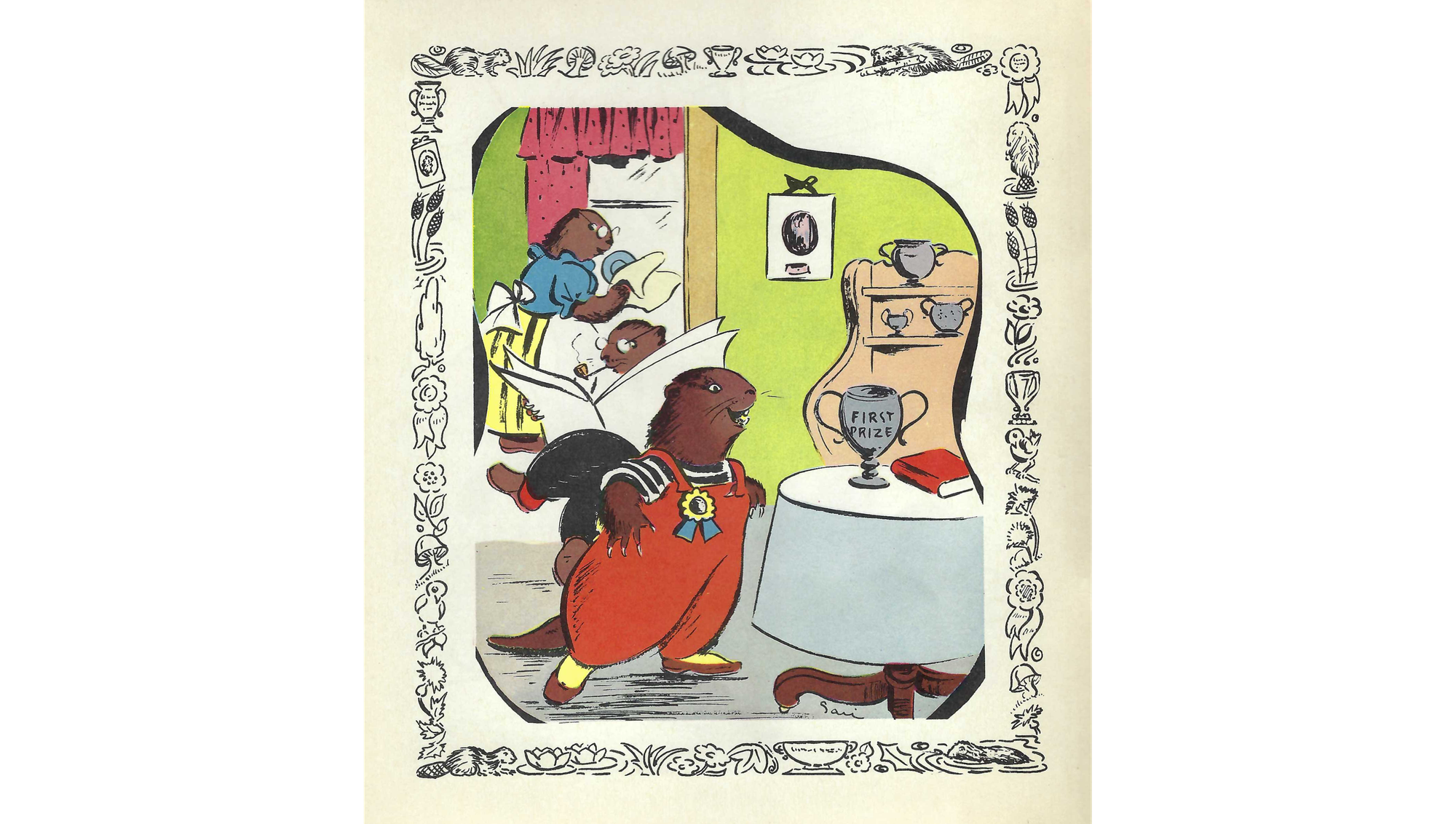
As you might imagine, Bobby’s disinterest in following the traditional “Busy Beaver” work ethic soon landed him in dire straits, when he fell asleep during one of his floating adventures and ended up far from home. Here is how Bobby himself sums up his talents, trials, and triumphs in his autobiography:
I never much liked the idea of working all day and night in the pond, like my two older brothers. My mom and brothers always told me that someday I would just “float away!” Then, one day, I DID!
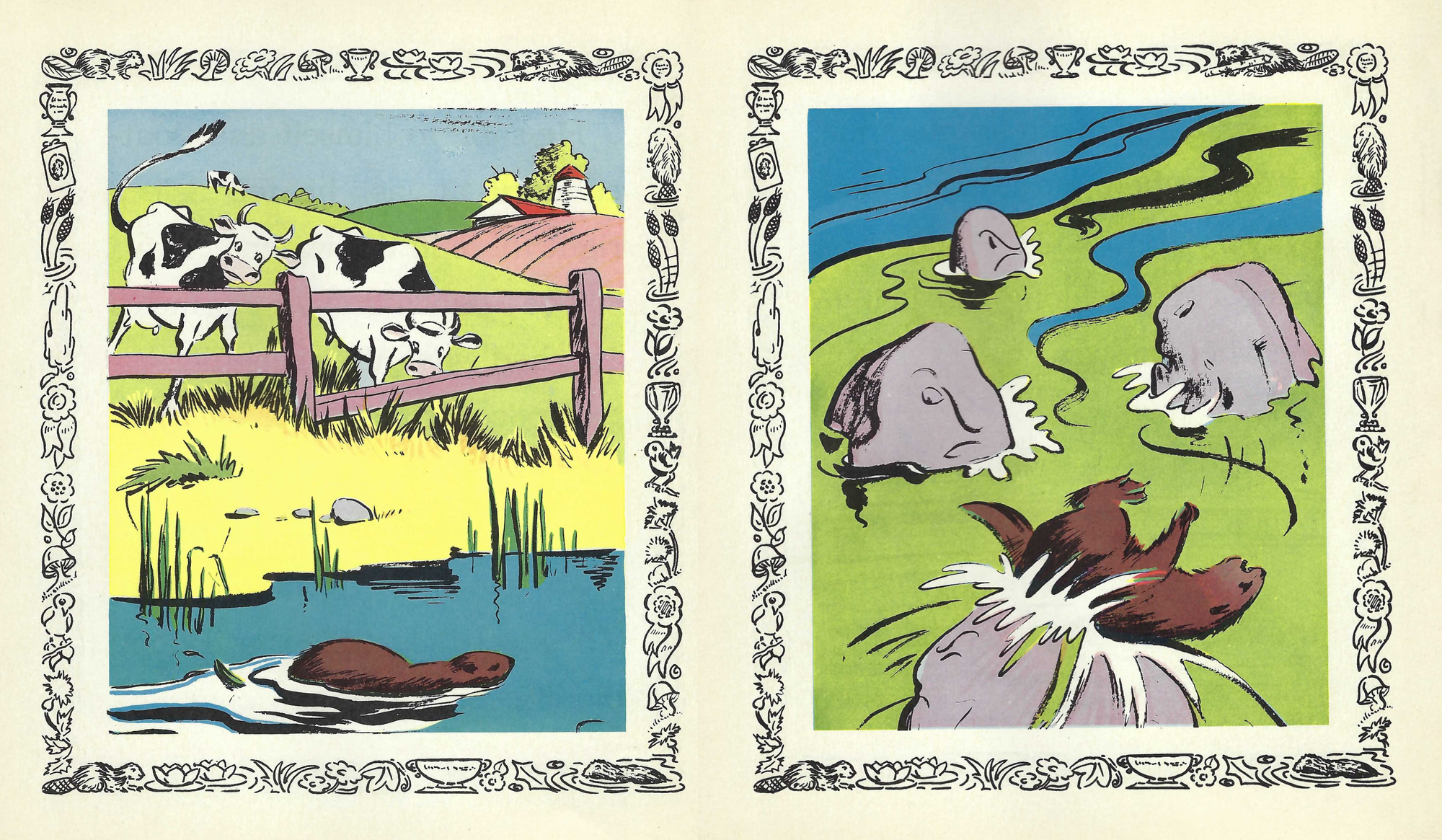
But my favorite “floating” pastime took a scary turn when I fell asleep in the water and ended up in the rapids! When I suddenly woke up after hitting another rock, I was lost and had to find my way back home in the dark—cold, hungry, and tired! Luckily, I heard my parents calling for me and ended up tucked in bed inside our cozy beaver lodge, waiting for warm milk and cookies from my mom.
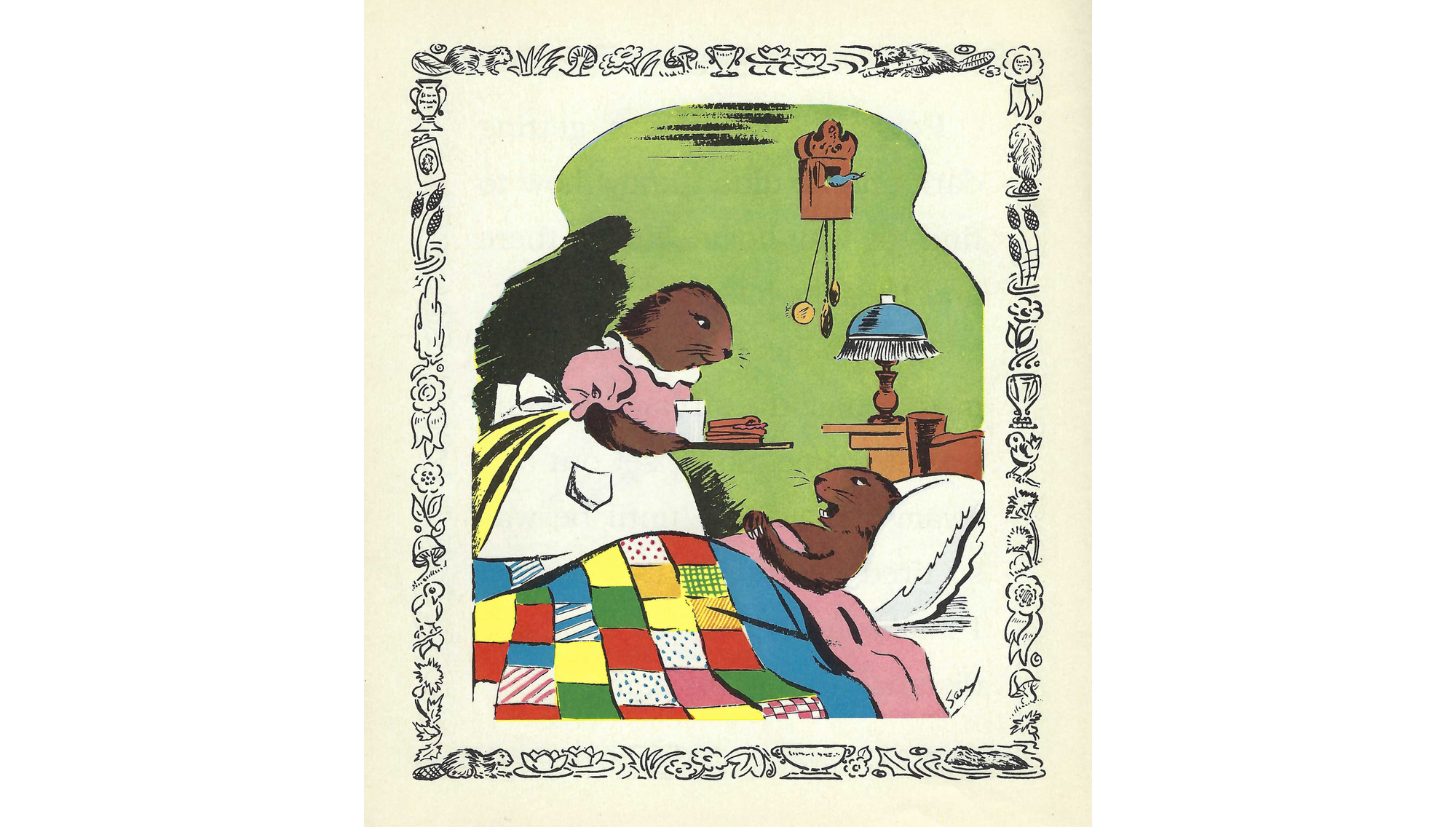
I finally realized that I couldn’t just splash and play all day. It was time to find a real job! But what would fit my unique skill profile? Since I was the best swimmer in Beaver Hollow and knew everyone, my elders determined that I would make a great mailman!
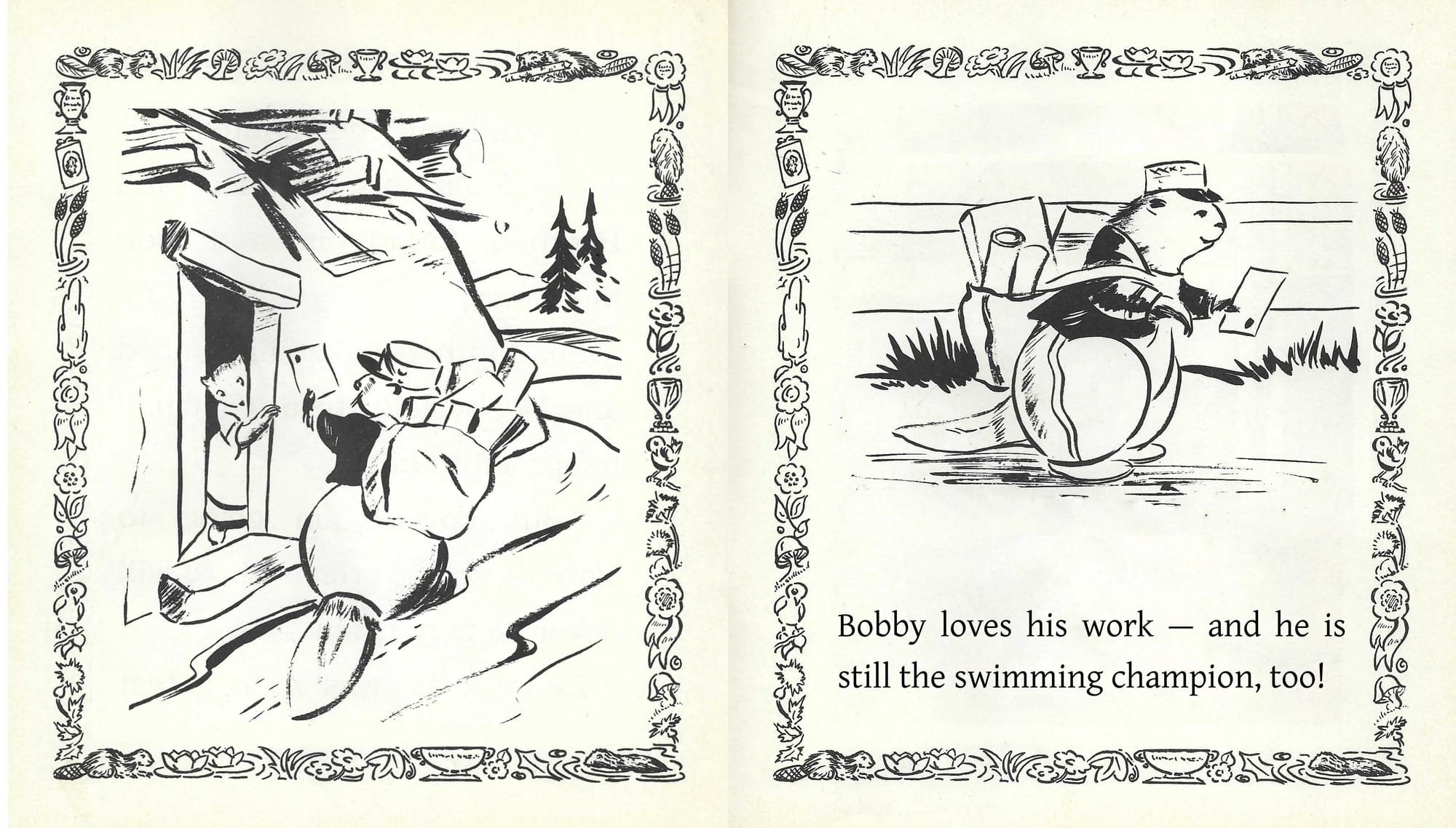
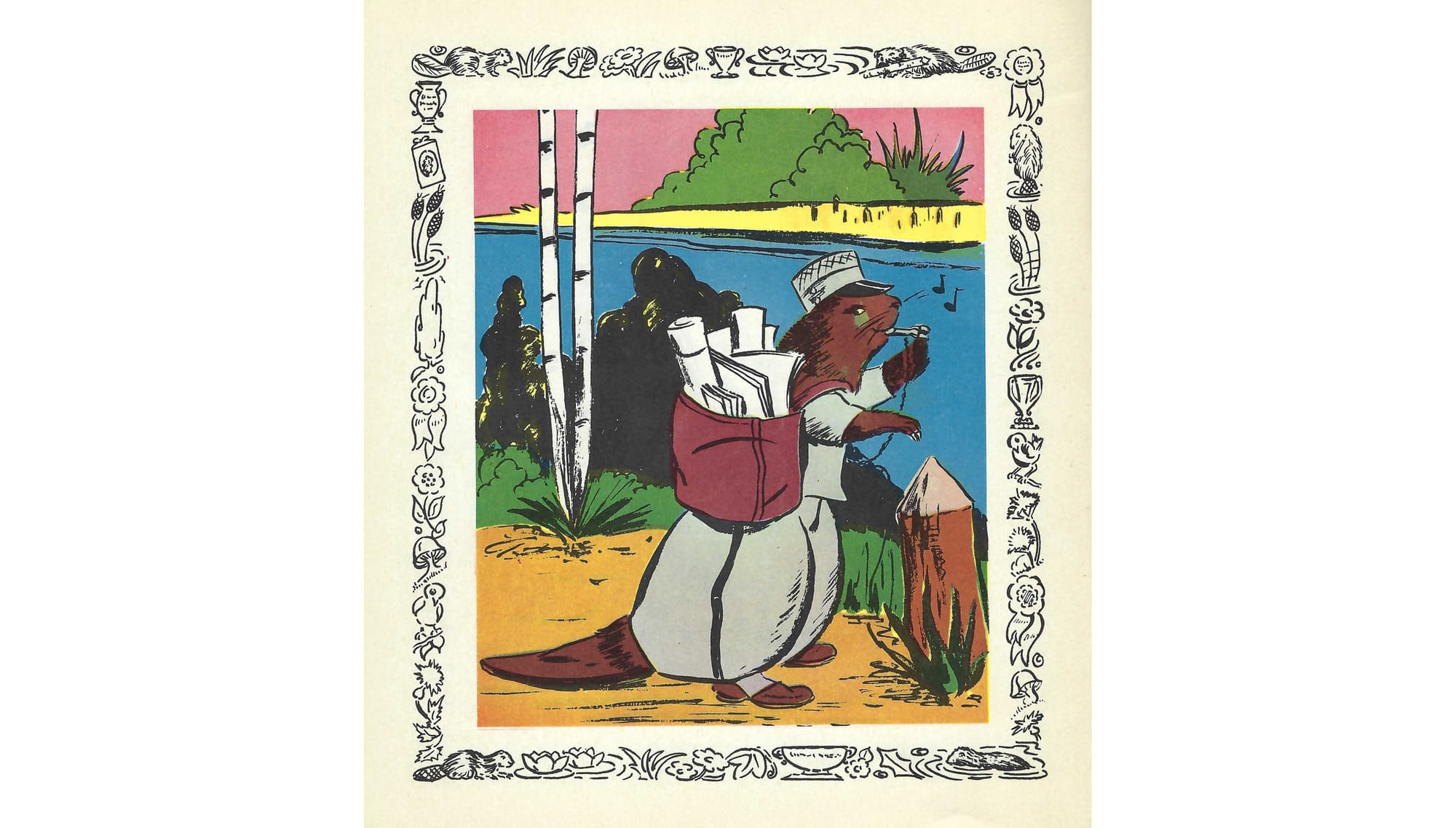
Bobby is a busy beaver now, and as he delivers the mail, he sings his new song:

History and Ecological Benefits of the North American Beaver
Beavers are ecological architects and engineers whose dams and ponds store carbon, improve water quality, and create healthy habitat to support biodiversity. Their skills help restore natural underground aquifers, and counteract adverse climate impacts, such as floods, droughts, and wildfires.
— Amy McNamara, Freshwater Ecosystems Strategist,
From an expert blog published by the National Resource Defense Council,
August 22, 2023.
Before the arrival of French and British explorers in the early 1600’s, the population of North American beavers was estimated to be between a conservative 200 million to an extravagant 400 million, and their habitat covered thousands of acres throughout the continent. They lived in nearly every stream from artic lands to the border of present-day Mexico.
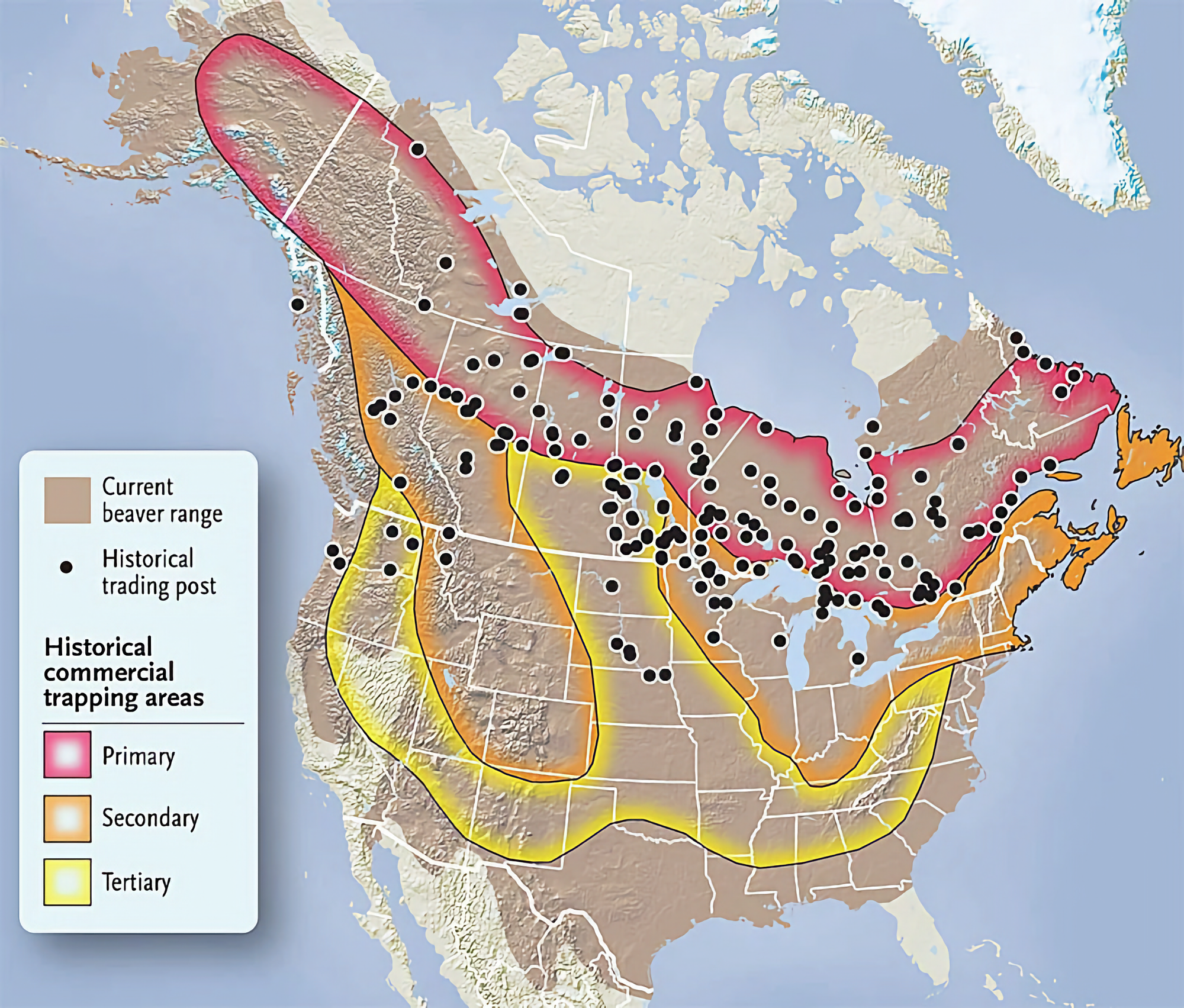
For centuries, indigenous North American tribes benefitted from beaver activity because it ensured healthy habitat for the fish, waterfowl, and wild game that provided sustenance for their communities. But as more and more Europeans arrived to create new settlements in beaver and other wildlife habitat, the landscape was drastically altered for human benefit only.
As native tribes began to interact even more frequently with non-native settlers and merchants, lucrative trading partnerships became established that prioritized commerce over sustainability. In this “business first” atmosphere, the dense, fine, waterproof beaver pelts were in high demand as commodities in the international fur trade—specifically for use in making the beaver fur hats that were the fashion craze of wealthy, urban “elites” in both North America and Europe.
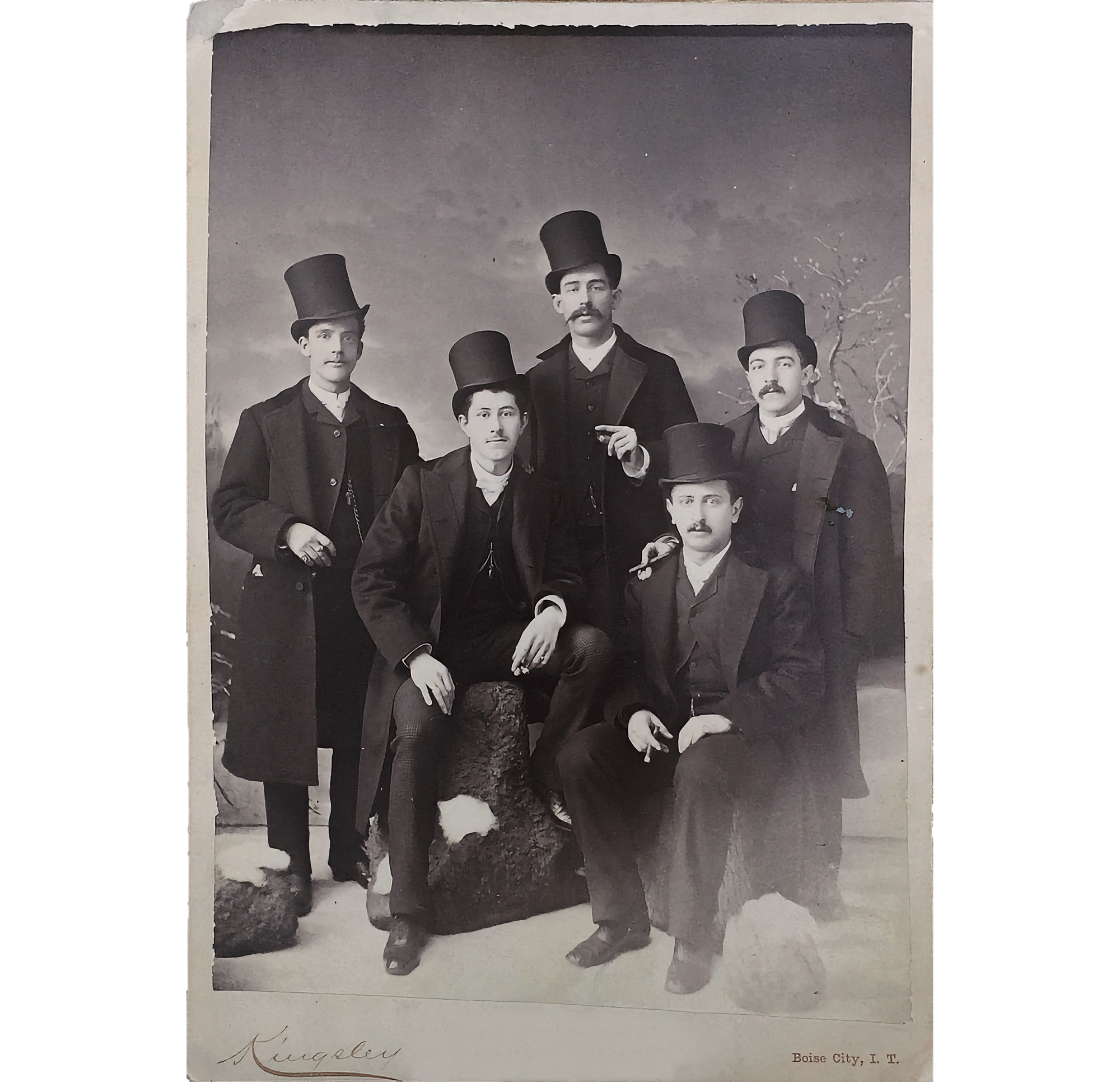
Fueled by ongoing greed and ruthlessness, beavers were trapped almost to extinction by the mid 19th century. The North American beaver was saved principally by a change in fashion preferences when beaver hats started to go out of style, and by legal protections that were enacted for beavers and their collective ecosystems in the 20th and 21st centuries.
Today, thanks to a greater awareness of the interconnected web of life that ensures the health of our planet, North American beavers have continued to grow to an estimated population of between 12 to 15 million.
The short animation below illustrates how we damaged and lost streams and wetlands, and what we (and beavers) can do to restore them.
Credit: NRDC/Lily Padula
The eloquent video below, filmed in the autumn of 2023 by the California Department of Fish and Wildlife, documents the respectful relocation of a beaver colony into its historic, original habitat:
As an enthusiastic supporter and fan of the local “Beaver Hollow” colony here in Tieton, my goal in writing this Art Nun post has been to generate a greater appreciation and respect for all the animals, plants, insects, amphibians, and birds that live nearby and enrich my daily life with their soothing presence.
My co-author, Bobby Beaver, and I bid you adieu and close this post with best wishes for peace and continued abundance on earth, our only home.

Sandra Dean, Visual Artist
Tieton, Washington USA


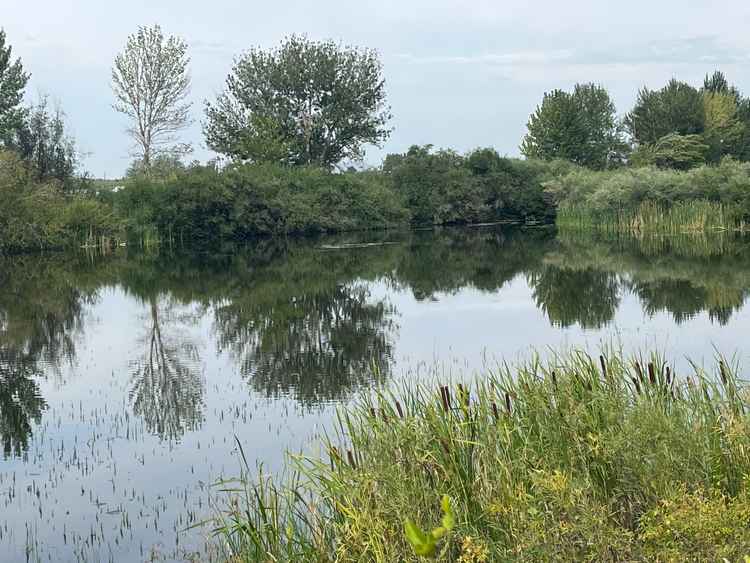


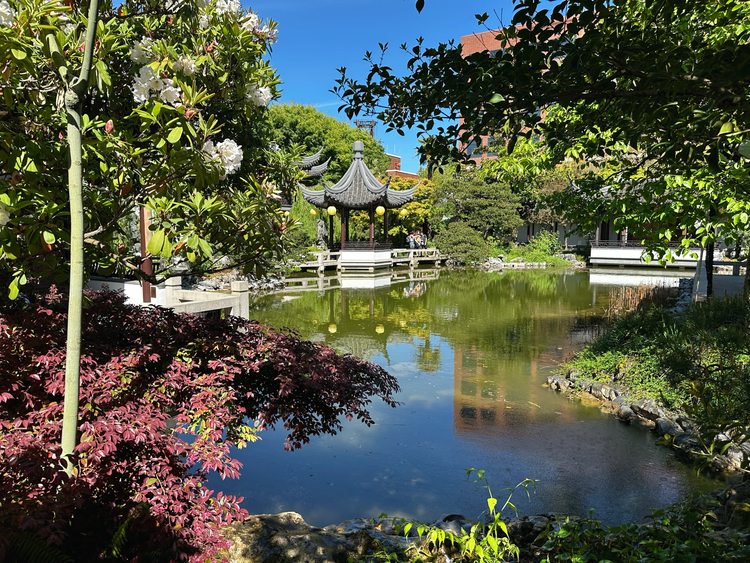
Member discussion